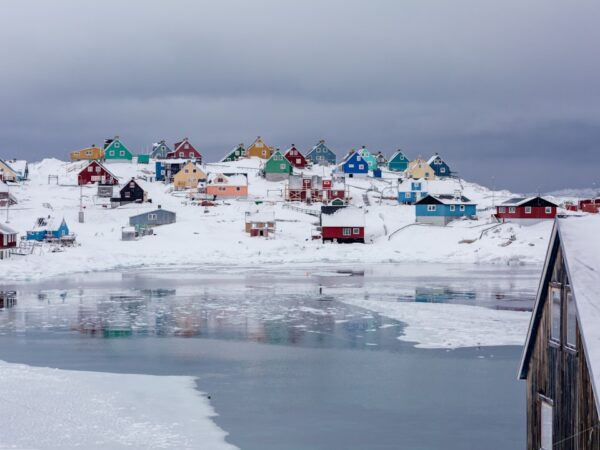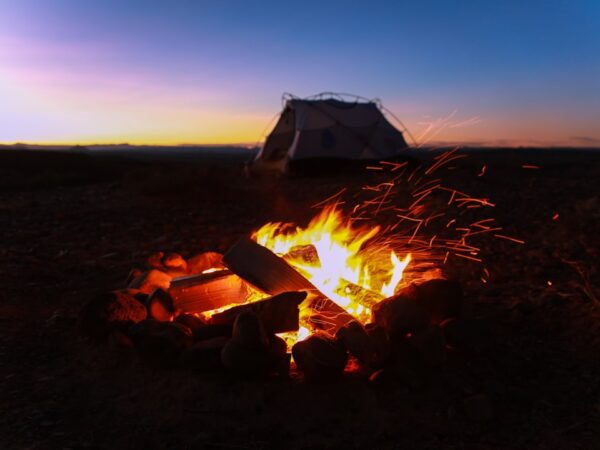
Scaling the Seven Summits: A Journey to the Top.
Scaling the Seven Summits is a remarkable feat that involves climbing the highest peak on each of the seven continents. This ultimate mountaineering challenge has captivated the hearts and minds of adventurers around the world. From the icy slopes of Mount Everest in Asia to the rugged terrain of Mount Kilimanjaro in Africa, each summit presents its own unique set of challenges and rewards. The allure of conquering these majestic peaks has made scaling the Seven Summits a popular goal for mountaineers.
Key Takeaways
- Scaling the Seven Summits involves climbing the highest peak on each continent.
- Physical and mental training is crucial for preparing for the journey.
- Teamwork and support are essential for success in scaling the Seven Summits.
- Summiting the peaks offers awe-inspiring views and a sense of personal accomplishment.
- The journey comes with risks and dangers that must be carefully managed.
The Seven Summits: What Are They?
The Seven Summits refer to the highest peaks on each of the seven continents. They are as follows:
1. Mount Everest (Asia): Standing at a staggering 8,848 meters (29,029 feet), Mount Everest is the highest peak in the world. Located in the Himalayas on the border between Nepal and China, it is a formidable challenge that requires climbers to navigate treacherous icefalls, crevasses, and extreme weather conditions.
2. Aconcagua (South America): At 6,960 meters (22,837 feet), Aconcagua is the highest peak in South America. Located in Argentina’s Andes mountain range, it offers climbers a demanding ascent with unpredictable weather and high altitude.
3. Denali (North America): Formerly known as Mount McKinley, Denali is the highest peak in North America at 6,190 meters (20,310 feet). Located in Alaska, it presents climbers with extreme cold temperatures, strong winds, and technical climbing routes.
4. Kilimanjaro (Africa): Mount Kilimanjaro is Africa’s highest peak at 5,895 meters (19,341 feet). Located in Tanzania, it is a non-technical climb that attracts adventurers from all over the world. However, climbers must still contend with high altitude and changing weather conditions.
5. Elbrus (Europe): Mount Elbrus is the highest peak in Europe, standing at 5,642 meters (18,510 feet). Located in Russia’s Caucasus Mountains, it is a dormant volcano that requires climbers to navigate glaciers and steep slopes.
6. Vinson Massif (Antarctica): Vinson Massif is the highest peak in Antarctica, reaching a height of 4,892 meters (16,050 feet). Located in the Ellsworth Mountains, it presents climbers with extreme cold temperatures and challenging logistics due to its remote location.
7. Carstensz Pyramid (Oceania): Carstensz Pyramid, also known as Puncak Jaya, is the highest peak in Oceania at 4,884 meters (16,024 feet). Located in Indonesia’s Papua province, it is a technical climb that involves rock climbing and rappelling.
Preparing for the Journey: Physical and Mental Training
Scaling the Seven Summits requires rigorous physical training and endurance. Climbers must build strength and stamina to withstand the physical demands of high-altitude climbing. This includes cardiovascular exercises, strength training, and endurance activities such as hiking or running. Additionally, climbers must acclimatize their bodies to high altitudes by gradually ascending to higher elevations over a period of time.
Mental preparation is equally important for the journey. Climbers must develop a strong mindset to overcome the physical challenges and mental fatigue that can arise during long expeditions. This involves practicing mental resilience, positive thinking, and stress management techniques. Visualizing success and setting realistic goals can also help climbers stay focused and motivated throughout their journey.
The Challenges of Scaling the Seven Summits
| Mountain | Elevation (m) | First Ascent | Challenges |
|---|---|---|---|
| Mount Everest | 8,848 | 1953 | Altitude sickness, extreme weather, avalanches, crevasses |
| Aconcagua | 6,962 | 1897 | Altitude sickness, extreme weather, high winds, rockfall |
| Denali | 6,190 | 1913 | Extreme cold, high winds, crevasses, avalanches |
| Kilimanjaro | 5,895 | 1889 | Altitude sickness, extreme weather, steep terrain, rockfall |
| Elbrus | 5,642 | 1874 | Altitude sickness, extreme weather, high winds, crevasses |
| Vinson | 4,892 | 1966 | Extreme cold, high winds, crevasses, whiteouts |
| Puncak Jaya | 4,884 | 1962 | Altitude sickness, extreme weather, steep terrain, rockfall |
Each summit presents its own set of physical challenges that climbers must overcome. Mount Everest, for example, poses extreme weather conditions, altitude sickness, and technical climbing routes. Aconcagua tests climbers with its high altitude, unpredictable weather, and steep slopes. Denali challenges climbers with its extreme cold temperatures, strong winds, and technical climbing routes.
In addition to the physical challenges, scaling the Seven Summits also requires mental and emotional strength. Climbers must be prepared to face fear, uncertainty, and discomfort. They must push through moments of doubt and fatigue to reach their goals. The long expeditions can also take a toll on climbers’ mental well-being, as they are often isolated from their loved ones and face the risk of injury or even death.
The Importance of Teamwork and Support
Teamwork is crucial for success when scaling the Seven Summits. Climbers often form teams or join guided expeditions to tackle these challenging peaks. Working together allows climbers to share the workload, provide support, and make decisions collectively. It also enhances safety, as team members can watch out for each other and offer assistance when needed.
Support from family and friends is also vital for climbers. The journey to scale the Seven Summits can be physically and emotionally demanding, and having a strong support system can provide encouragement and motivation. Loved ones can offer words of encouragement, help with logistics, and provide emotional support during the long periods of separation.
The Joys of Summiting: Awe-Inspiring Views and Personal Accomplishment
Reaching the summit of each peak in the Seven Summits offers climbers breathtaking views that few have witnessed. From the top of Mount Everest, climbers can see the vast expanse of the Himalayas stretching out before them. Standing on the summit of Aconcagua provides panoramic views of the Andes mountain range. Each summit offers its own unique beauty and awe-inspiring vistas that make all the challenges worthwhile.
Summiting each peak also brings a sense of personal accomplishment. Scaling the Seven Summits requires dedication, perseverance, and a willingness to push beyond one’s limits. The journey is a testament to the climber’s physical and mental strength, and reaching the summit is a moment of triumph and fulfillment.
The Dangers and Risks of Scaling the Seven Summits
Scaling the Seven Summits comes with inherent dangers and risks. Extreme weather conditions, avalanches, and altitude sickness are just a few of the potential hazards climbers may face. The high altitudes can also lead to altitude-related illnesses such as pulmonary edema or cerebral edema, which can be life-threatening if not properly managed.
To mitigate these risks, climbers must take precautions such as thorough physical examinations before embarking on their journey, acclimatization periods to allow their bodies to adjust to high altitudes, and carrying appropriate safety equipment. It is also important for climbers to be aware of their own limitations and make informed decisions about when to turn back if conditions become too dangerous.
Lessons Learned: Reflections on the Journey
Climbers who have scaled the Seven Summits often reflect on the lessons they have learned throughout their journey. They speak of the importance of perseverance, adaptability, and resilience in the face of adversity. They learn to appreciate the beauty of nature and the fragility of life. The experience teaches them humility and gratitude for the opportunity to witness the world from such great heights.
The Impact of Scaling the Seven Summits on Personal Growth and Development
Scaling the Seven Summits can have a profound impact on personal growth and development. The journey challenges climbers physically, mentally, and emotionally, pushing them beyond their comfort zones. Through this process, climbers develop resilience, self-confidence, and a greater sense of self-awareness.
The experience also fosters a deep appreciation for nature and a desire to protect our planet. Climbers witness firsthand the effects of climate change on these majestic peaks and become advocates for environmental conservation.
Inspiring Others: Sharing the Seven Summits Experience and Encouraging Exploration
Climbers who have scaled the Seven Summits have the power to inspire others through their experiences. By sharing their stories, they encourage others to pursue their own goals and dreams. They inspire a sense of adventure and exploration, reminding us of the vast beauty that exists beyond our everyday lives.
In conclusion, scaling the Seven Summits is a remarkable achievement that requires physical and mental preparation, teamwork, and support. It presents climbers with a unique set of challenges and rewards, from breathtaking views to personal accomplishment. While it comes with inherent risks, the journey offers valuable lessons and personal growth. By sharing their experiences, climbers can inspire others to pursue their own dreams and explore the world around them. So, whether it’s scaling the Seven Summits or pursuing any other goal, let this be a reminder to never stop dreaming and never stop exploring.
FAQs
What are the Seven Summits?
The Seven Summits are the highest peaks on each of the seven continents: Mount Everest in Asia, Aconcagua in South America, Denali in North America, Kilimanjaro in Africa, Elbrus in Europe, Vinson Massif in Antarctica, and Puncak Jaya (Carstensz Pyramid) in Oceania.
What is the goal of climbing the Seven Summits?
The goal of climbing the Seven Summits is to reach the highest point on each of the seven continents, which is considered a major achievement in mountaineering.
How difficult is it to climb the Seven Summits?
Climbing the Seven Summits is considered a very challenging and difficult feat, requiring a high level of physical fitness, technical climbing skills, and experience in high-altitude mountaineering.
How long does it take to climb the Seven Summits?
The time it takes to climb the Seven Summits varies depending on the individual climber and their experience level. Some climbers have completed the challenge in as little as 7 months, while others have taken several years to complete it.
How much does it cost to climb the Seven Summits?
The cost of climbing the Seven Summits varies depending on a number of factors, including the specific peaks being climbed, the level of support and services provided by the climbing company, and the individual climber’s equipment and travel expenses. It can range from tens of thousands to hundreds of thousands of dollars.
How many people have climbed the Seven Summits?
As of 2021, it is estimated that around 500 people have successfully climbed all Seven Summits.


















